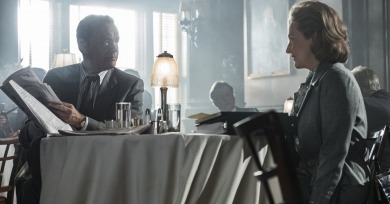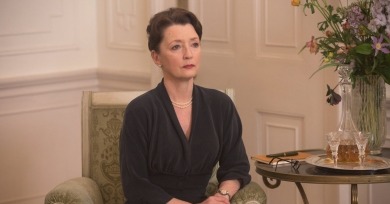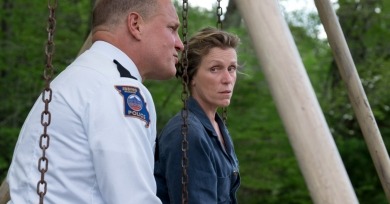Reviews
In 24 Frames, the boundary that separates still photograph from motion picture proves to be beside the point, much as it is immaterial to the impact of the heady Kiarostami romance Certified Copy whether the central couple are long-term partners or total strangers.
Avoiding the sweeping grandiosity and visual tidiness of so many period pieces, Thomas brings a deeply tactile approach to her first solo feature, which is set in the mountains of 19th-century Brazil.
Tasked with the pivot film in a trilogy, Johnson chose the right time to reinvigorate the narrative with irreconcilable forces, doubts, and conflicts. Suspension is the best asset of a a middle chapter. And best in that it is truest.
The Post suggests the degree to which journalism often only exists as a direct result of the intervention of wealthy players, and that access to important stories is twinned with a discomfiting closeness between reporters and historical actors.
A tale of romantic obsession and fetishistic desire, Phantom Thread interrogates the need of a dysfunctional man to remake and control a woman, but then flips that somewhat tired script.
The sober, unsentimental approach to the interactions between Shaar and her women prevent Soufra from becoming a film that traffics in uplift. Soufra does not dwell on the delusion that the worth of an immigrant hinges on her productivity.
Throughout his career he has chronicled life on the margins to find beauty where others only see barren squalor. Rather than a rhetorical stance, his commitment to lost causes stems from a genuine contempt for conformism, while the anti-naturalism of his dramaturgy abstains from sentimentalism and emotional manipulation.
For Cone, queerness is less about the polemical assertion of identity than about recognizing the endless flux of experience and desire that renders labels and classifications at best arbitrary and at worst stultifying. It is a kind of queer humanism.
Guadagnino and screenwriter James Ivory have produced a film that simultaneously analyzes and dramatizes issues of sexuality, religious identity, and, once again, privilege and yet without straining against its clearly marked narrative boundaries.
Despite the infrastructure set in motion centuries ago to keep only whites in positions of power, Mudbound elegantly depicts how such ingrained racism only serves to aid whites in digging our own graves.
Three Billboards is the kind of momentary crowd-pleasing entertainment that will satiate audiences looking for the movie equivalent of a knee to the crotch—which not so incidentally is one of its defining images.
What has not changed, despite the shift into genre, is the commitment to helping us sympathize with damaged, alienating (and alienated) people. In his films we might feel the discomfort of self-recognition from these characters, while in all but the finest horror films, their predicament is usually reduced to a motive for a reign of bloody terror.
An occasional tin ear for old-guy dialogue suggests Linklater might still be more comfortable with the casual-philosophical badinage of those a decade or more his junior, but the 12-year gestation gives the film the distance crucial to its angry, sad, but, in hindsight, wise perspective on the early Iraq War years.
Gerwig evokes that specifically senior-year feeling of the rapid approach of adulthood through a swift editing style, offering a dynamic rhythm that conjures the sense of finite time she has with family and friends, a patchwork of energetic montages propelling Christine and the story forward.













